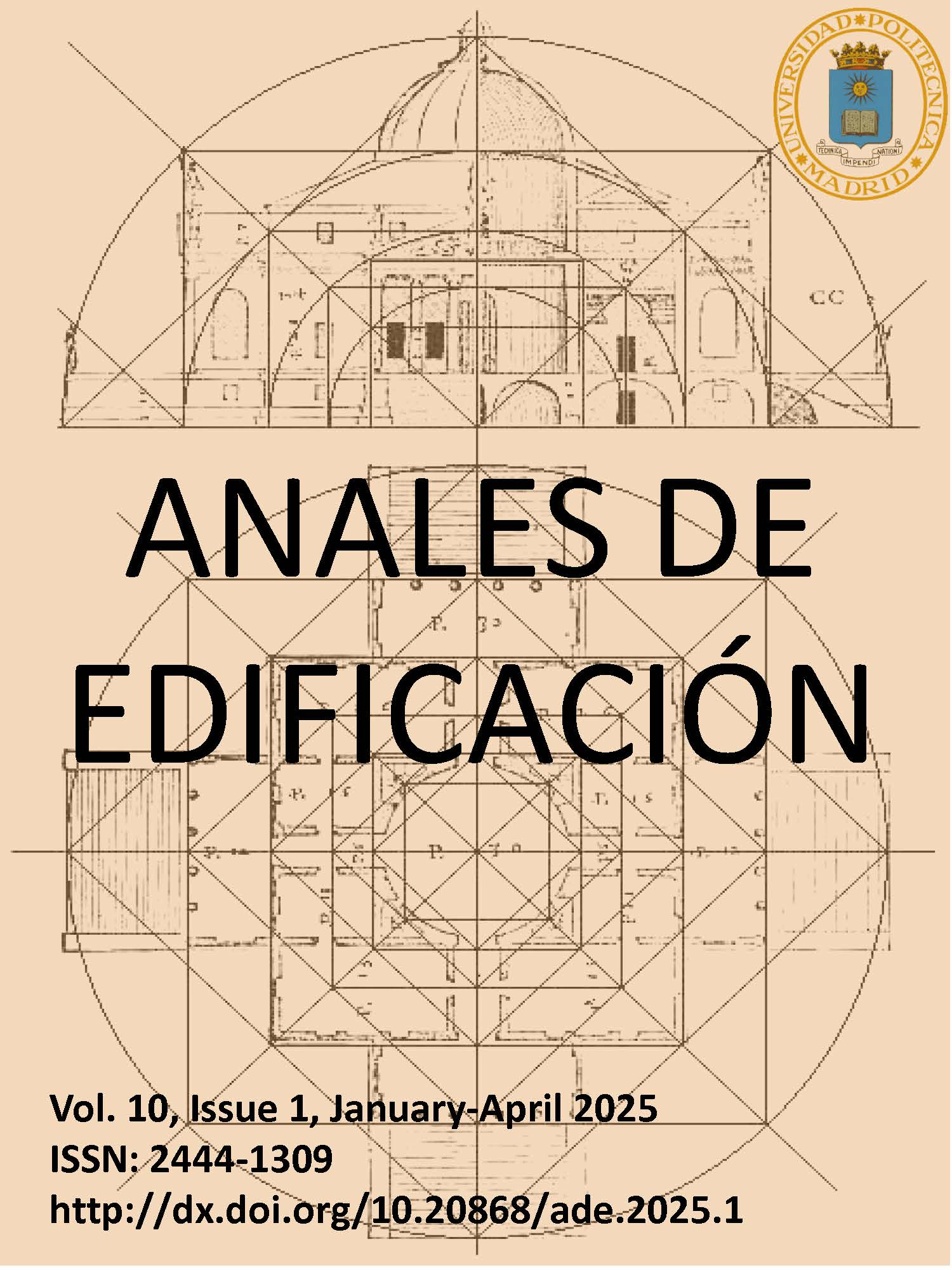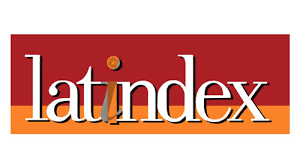Evolución del índice de estrés por calor de la ciudad de Madrid mediante el modelo climático UrbClim de la Agencia Espacial Europea
DOI:
https://doi.org/10.20868/ade.2025.5387Palabras clave:
Índice de estrés por calor, modelo UrbClim, zonas climáticas locales, mitigación del calor, clima urbanoResumen
El calentamiento global está generando importantes incrementos de la temperatura ambiental que está afectando a la calidad de vida de las personas. Hoy en día, el 30% de la población mundial reside en lugares que cuentan con condiciones climáticas de calor extremo y se espera que se incremente al 74% en las próximas dos décadas. En esta investigación se ha analizado la evolución que ha experimentado el índice de estrés por calor (Hi) entre los años 2008, 2012 y 2017 en las diferentes Zonas Climáticas Locales (ZCL) de la ciudad de Madrid mediante el modelo climático UrbClim de la Agencia Espacial Europea. Mediante imágenes satelitales Landsat 5 y 8 y para cada ZCL, se han tenido en cuenta las siguientes variables: Índice de vegetación de diferencia normalizada y el índice de edificación de diferencia normalizada. Nuestros resultados reportan que se ha producido entre los años un importante crecimiento de los valores de estrés por calor siendo mayor en las ZCL de uso urbano (ZCL-2, 3, 4, 5, 6, 8 y 9) y menor en las ZCL de uso rural (ZCL-A, B, C, D, E, F y G). Por tanto, es necesario el aumento de zonas y espacios verdes y el empleo de fachadas y cubiertas vegetales en las zonas urbanas al objeto de aumentar la resistencia al calor de las areas urbanas.
Descargas
Referencias
1. An N, Dou J, González-Cruz JE, Bornstein RD, Miao S, Li L. An observational case study of synergies between an intense heat wave and the urban heat island in Beijing. Journal of Applied Meteorology and Climatology. (2020); 59:605–20.
2. Anjos M, Targino AC, Krecl P, Oukawa GY, Braga RF. Analysis of the urban heat island under different synoptic patterns using local climate zones. Building and Environment. (2020); 185.
3. Arnfield AJ. Two decades of urban climate research: A review of turbulence, exchanges of energy and water, and the urban heat island. International Journal of Climatology. (2003); 23:1–26.
4. Avdan U, Jovanovska G. Algorithm for automated mapping of land surface temperature using LANDSAT 8 satellite data. Journal of Sensors. (2016);20 16-23.
5. Brooke Anderson G, Bell ML, Peng RD. Methods to calculate the heat index as an exposure metric in environmental health research. Environmental Health Perspectives. (2013); 121:1111–9.
6. Brousse O, Georganos S, Demuzere M, Vanhuysse S, Wouters H, Wolff E, et al. Using Local Climate Zones in Sub-Saharan Africa to tackle urban health issues. Urban Climate. (2019); 27:227–42. Available from: https://doi.org/10.1016/j.uclim.2018.12.004
7. Chavez PS. An improved dark-object subtraction technique for atmospheric scattering correction of multispectral data. Remote Sensing of Environment (1988); 24:459–79.
8. Congedo L. Semi-Automatic Classification Plugin Documentation Release 4.8.0.1. Release. (2016); 4:29. Available from: https://media.readthedocs.org/pdf/semiautomaticclassificationmanual-v4/latest/semiautomaticclassificationmanual-v4.pdf
9. De Ridder K, Lauwaet D, Maiheu B. UrbClim - A fast urban boundary layer climate model. Urban Climate. (2015); 12:21–48. Available from: http://dx.doi.org/10.1016/j.uclim.2015.01.001
10. Demuzere M, Kittner J, Martilli A, Mills G, Moede C, Stewart ID, et al. A global map of local climate zones to support earth system modelling and urban-scale environmental science. Earth System Science Data. (2022); 14:3835–73.
11. Diallo-Dudek J, Lacaze B, Comby J. Land surface temperature in the urban area of Lyon metropolis: A comparative study of remote sensing data and MesoNH model simulation. 2015 Joint Urban Remote Sensing Event, JURSE. (2015); 2–5.
12. Emmanuel R, Krüger E. Urban heat island and its impact on climate change resilience in a shrinking city: The case of Glasgow, UK. Building and Environment. (2012); 53:137–49. Available from: http://dx.doi.org/10.1016/j.buildenv.2012.01.020
13. Equere V, Mirzaei PA, Riffat S. Definition of a new morphological parameter to improve prediction of urban heat island. Sustainable Cities and Society. (2020) ;56.
14. Founda D, Santamouris M. Synergies between Urban Heat Island and Heat Waves in Athens (Greece), during an extremely hot summer (2012). Scientific Reports. (2017); 7:1–11. Available from: http://dx.doi.org/10.1038/s41598-017-11407-6
15. Geletič J, Lehnert M, Savić S, Milošević D. Modelled spatiotemporal variability of outdoor thermal comfort in local climate zones of the city of Brno, Czech Republic. Science of the Total Environment. (2018); 624:385–95.
16. Guo A, Yang J, Xiao X, Xia (Cecilia) J, Jin C, Li X. Influences of urban spatial form on urban heat island effects at the community level in China. Sustainable Cities and Society. (2020); 53:101972. Available from: https://doi.org/10.1016/j.scs.2019.101972
17. Hass AL, Ellis KN, Mason LR, Hathaway JM, Howe DA. Heat and humidity in the city: Neighborhood heat index variability in a mid-sized city in the Southeastern United States. International Journal of Environmental Research and Public Health. (2016); 13.
18. Hidalgo García D, Arco Díaz J. Modeling of the Urban Heat Island on local climatic zones of a city using Sentinel 3 images: Urban determining factors. Urban Climate (2021); 37.
19. Hua L, Zhang X, Nie Q, Sun F, Tang L. The impacts of the expansion of urban impervious surfaces on urban heat islands in a coastal city in China. Sustainability. (2020); 12.
20. IPCC. The fifth report of the Intergovernmental Panel on Climate Change (IPCC). [Internet]. (2013). Available from: https://www.ipcc.ch/report/ar5/wg1/
21. Jacobs C, Singh T, Gorti G, Iftikhar U, Saeed S, Syed A, et al. Patterns of outdoor exposure to heat in three South Asian cities. Science of the Total Environment. (2019); 674:264–78. Available from: https://doi.org/10.1016/j.scitotenv.2019.04.087
22. Kafy A Al, Faisal A Al, Rahman MS, Islam M, Al Rakib A, Islam MA, et al. Prediction of seasonal urban thermal field variance index using machine learning algorithms in Cumilla, Bangladesh. Sustainable Cities and Society. (2021);64: 102542. Available from: https://doi.org/10.1016/j.scs.2020.102542
23. Karakuş CB. The Impact of Land Use/Land Cover (LULC) Changes on Land Surface Temperature in Sivas City Center and Its Surroundings and Assessment of Urban Heat Island. Asia-Pacific Journal of Atmospheric Sciences. (2019); 55:669–84.
24. Khamchiangta D, Dhakal S. Physical and non-physical factors driving urban heat island: Case of Bangkok Metropolitan Administration, Thailand. Journal of Environmental Management. (2019); 248:109285. Available from: https://doi.org/10.1016/j.jenvman.2019.109285
25. Kotharkar R, Ghosh A, Kotharkar V. Estimating summertime heat stress in a tropical Indian city using Local Climate Zone (LCZ) framework. Urban Climate. (2021); 36.
26. Kovats RS, Campbell-Lendrum D, Matthies F. Climate change and human health: Estimating avoidable deaths and disease. Risk Analysis. (2005); 25:1409–18.
27. Kumar P, Rai A, Upadhyaya A, Chakraborty A. Analysis of heat stress and heat wave in the four metropolitan cities of India in recent period. Science of the Total Environment. (2022); 818.
28. Li B, Tao S, Dawson RW. Relations between AVHRR NDVI and ecoclimatic parameters in China. International Journal of Remote Sensing. (2002); 23: 989–99.
29. Li J, Song C, Cao L, Zhu F, Meng X, Wu J. Impacts of landscape structure on surface urban heat islands: A case study of Shanghai, China. Remote Sensing of Environment. (2011); 115:3249–63.
30. Martí Ezpeleta A, Royé D. Intensidad y duración del estrés térmico en verano en el área urbana de Madrid. Geographicalia. (2021); 95–113.
31. Mora C, Dousset B, Caldwell IR, Powell FE, Geronimo RC, Bielecki CR, et al. Global risk of deadly heat. Nature Climate Change. (2017); 7:501–6.
32. Nicholson SE, Farrar TJ. The influence of soil type on the relationships between NDVI, rainfall, and soil moisture in semiarid Botswana. I. NDVI response to rainfall. Remote Sensing of Environment. (1994); 50:107–20.
33. Rothfusz LP, Headquarters NSR. The heat index equation (or, more than you ever wanted to know about heat index). Fort Worth, Texas: National Oceanic and Atmospheric Administration, National Weather Service, Office of Meteorology. (1990); 23–90. Available from: papers://c6bd9143-3623-4d4f-963f-62942ed32f11/Paper/p395
34. Royé D, Sera F, Tobías A, Lowe R, Gasparrini A, Pascal M, et al. Effects of Hot Nights on Mortality in Southern Europe. Epidemiology. (2021); 487–98.
35. Rozenstein O, Qin Z, Derimian Y, Karnieli A. Derivation of land surface temperature for landsat-8 TIRS using a split window algorithm. Sensors (2014); 14:5768–80.
36. Santamouris M. Recent progress on urban overheating and heat island research. Integrated assessment of the energy, environmental, vulnerability and health impact. Synergies with the global climate change. Energy and Buildings. (2020); 207.
37. Schneider A, Friedl MA, Potere D. Mapping global urban areas using MODIS 500-m data: New methods and datasets based on “urban ecoregions.” Remote Sensing of Environment. (2010); 114:1733–46.
38. Song J, Chen W, Zhang J, Huang K, Hou B, Prishchepov A V. Effects of building density on land surface temperature in China: Spatial patterns and determinants. Landscape and Urban Planning. (2020); 198:103794. Available from: https://doi.org/10.1016/j.landurbplan.2020.103794
39. Stewart ID, Oke TR. Local climate zones for urban temperature studies. Bulletin of the American Meteorological Society. (2012); 93:1879–900.
40. UNO. 68% of the world population projected to live in urban areas by 2050, says UN. (2018); Available from: https://www.un.org/development/desa/en/news/population/2018-revision-of-world-urbanization-prospects.html
41. Verdonck ML, Demuzere M, Hooyberghs H, Beck C, Cyrys J, Schneider A, et al. The potential of local climate zones maps as a heat stress assessment tool, supported by simulated air temperature data. Landscape and Urban Planning. (2018); 178:183–97. Available from: https://doi.org/10.1016/j.landurbplan.2018.06.004
42. Wang T, Shi J, Ma Y, Husi L, Comyn-Platt E, Ji D, et al. Recovering Land Surface Temperature Under Cloudy Skies Considering the Solar-Cloud-Satellite Geometry: Application to MODIS and Landsat-8 Data. Journal of Geophysical Research: Atmospheres. (2019); 124:3401–16.
43. Wang J, Ouyang W. Attenuating the surface Urban Heat Island within the Local Thermal Zones through land surface modification. Journal of Environmental Management. (2017); 187:239–52. Available from: http://dx.doi.org/10.1016/j.jenvman.2016.11.059
44. Yang C, Yan F, Zhang S. Comparison of land surface and air temperatures for quantifying summer and winter urban heat island in a snow climate city. Journal of Environmental Management. (2020); 265: 110563. Available from: https://doi.org/10.1016/j.jenvman.2020.110563
45. Zha Y, Gao J, Ni S. Use of normalized difference built-up index in automatically mapping urban areas from TM imagery. International Journal of Remote Sensing (2003); 24:583–94.
46. Zhang Y, Chen L, Wang Y, Chen L, Yao F, Wu P, et al. Research on the contribution of urban land surface moisture to the alleviation effect of urban land surface heat based on landsat 8 data. Remote Sensing. (2015); 7:10737–62.
47. Zhou D, Zhao S, Zhang L, Sun G, Liu Y. The footprint of urban heat island effect in China. Scientific Reports. (2015); 5:2–12.
Descargas
Publicado
Número
Sección
Licencia
Derechos de autor 2025 Autor / BY-NC

Esta obra está bajo una licencia internacional Creative Commons Atribución-NoComercial-SinDerivadas 4.0.
1. Los autores conservan los derechos de autor y garantizan a la revista el derecho de una Licencia Creative Commons Atribución - Nocomercial 4.0 Internacional que permite a otros compartir el trabajo con un reconocimiento de la autoría y uso no comercial.
2. Los autores pueden establecer por separado acuerdos adicionales para la distribución no exclusiva de la versión de la obra publicada en la revista (por ejemplo, situarlo en un repositorio institucional o publicarlo en un libro).
Salvo indicación contraria, todos los contenidos de la edición electrónica se distribuyen bajo una licencia de uso y distribución “Creative Commons"












